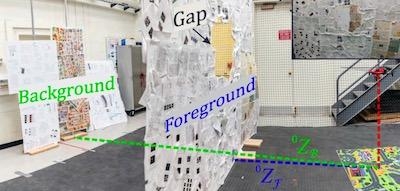Sat, Sep 15, 2018
University Of Maryland Scientists Working On Project GapFlyt
Researchers at the University of Maryland are teaching drones to employ techniques used by birds and insects to fly through narrow gaps at high speeds. The drone, a Bebop 2 drone with an NVIDIA Jetson TX2 GPU on board, has been able to fly through a small hole at about 6 feet per second with about an 85 percent success rate.

The program is called GapFlyt by the UM researchers. TechCrunch reports that the drone utilizes a monocular camera that allows the aircraft to develop a 3D model of a surface from a series of photographs. The drone can assess the size and depth of holes and find a safe path through the gap.
Spectrum IEEE reports that the drone captures a series of images and identifies similar features in each image. Features behind the gap will appear to move less than those that are closer, and the drone identifies where that difference is the greatest. Then, it flies through the gap.
A process called visual servoing provides feedback to control the motion. The drone flies around the target area, and adjusts its movement to be sure its position relative to the gap is consistent. The paper published by the UMD researchers equates the process to that of a bee looking for a gap through which it wishes to fly.
According to the researchers, they achieved a success rate of 85 percent "over 150 trials for different arbitrary shaped windows under a wide range of conditions which includes a window with a minimum tolerance of just 5 cm."
"We present a minimalist philosophy to mimic insect behaviour to solve complex problems with minimal sensing and active movement to simplify the problem in hand. This philosophy was used to develop a method to find an unknown gap and fly through it using only a monocular camera and onboard sensing," the paper says in its conclusion. "As a parting thought, IMU data can be coupled with the monocular camera to get a scale of the window and plan for aggressive maneuvers."
(Sources as cited. Image from University of Maryland)
More News
He Attempted To Restart The Engine Three Times. On The Third Restart Attempt, He Noticed That Flames Were Coming Out From The Right Wing Near The Fuel Cap Analysis: The pilot repor>[...]
Make Sure You NEVER Miss A New Story From Aero-News Network Do you ever feel like you never see posts from a certain person or page on Facebook or Instagram? Here’s how you c>[...]
From 2009 (YouTube Edition): Leading Air Show Performers Give Their Best Advice for Newcomers On December 6th through December 9th, the Paris Las Vegas Hotel hosted over 1,500 air >[...]
Aero Linx: NASA ASRS ASRS captures confidential reports, analyzes the resulting aviation safety data, and disseminates vital information to the aviation community. The ASRS is an i>[...]
“For our inaugural Pylon Racing Seminar in Roswell, we were thrilled to certify 60 pilots across our six closed-course pylon race classes. Not only did this year’s PRS >[...]
 NTSB Final Report: Rutan Long-EZ
NTSB Final Report: Rutan Long-EZ ANN FAQ: Turn On Post Notifications
ANN FAQ: Turn On Post Notifications Classic Aero-TV: ICAS Perspectives - Advice for New Air Show Performers
Classic Aero-TV: ICAS Perspectives - Advice for New Air Show Performers ANN's Daily Aero-Linx (06.28.25)
ANN's Daily Aero-Linx (06.28.25) Aero-News: Quote of the Day (06.28.25)
Aero-News: Quote of the Day (06.28.25)



